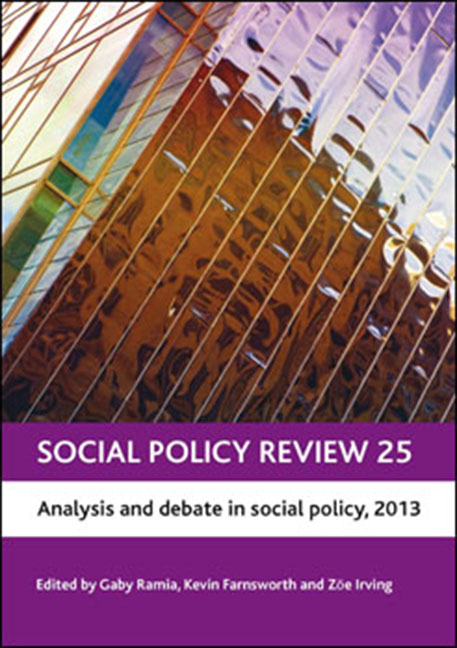Book contents
Part Three - Themed section: work, employment and insecurity
Published online by Cambridge University Press: 03 February 2022
Summary
In the post-financial-crisis world, one dimension of social policy that has been propelled to centre stage in advanced economies is employment and the lack of it. High unemployment and the rather limited and unsuccessful current attempts to deal with it serve as a reminder that employment policy, rather than social security conditionality, was central to 20th-century welfare settlements, whatever their variety. Since the heady days of post-war ‘full employment’, however, much has changed: the global (post-)industrial landscape, the gender division of paid work and, in the rich countries, the decline of collective responsibility for the maintenance of employment invested in the state, in favour of supply-focused individualisation. From the 1990s, welfare states embarked upon a range of reforms to relocate themselves in the changing global labour market, following strategies such as the promotion of ‘life-long learning’ to pioneer the sought-after ‘knowledge economy’, ‘maximum participation’ to ensure fiscal balance through ‘making work pay’, and ‘activation’ to prevent exclusion and reskill.
Despite all this intense policy activity, the crises and recessions since 2007 have altered the context in which these strategies operate. World unemployment currently stands at around 6%, but in the advanced economies, it is 8.7%. While, in the past, phenomena such as ‘under-employment’ were associated with the global South, the EU now recognises this and a whole range of other ‘supplementary forms’ of unemployment in its statistical collections. Social policy practice and scholarship have a long-standing engagement with the problem of ‘work’ and its relationship to social security, but policy has an underwhelming record where reconciling the precarious and intermittent reality of postindustrial working life with the industrial social insurance principle is concerned. This failure of social policy to deal with the shift away from labour market security is all the more apparent in the current recession; even Danish ‘flexicurity’, arguably the most developed post-industrial employment–social security model, has been unable to counteract the consequences of global economic interdependence. Recognising that advanced economies are faced with a grave threat to social security, the chapters in Part Three provide a thought-provoking assessment of some key problematics in social and employment policy.
- Type
- Chapter
- Information
- Social Policy Review 25Analysis and Debate in Social Policy, 2013, pp. 203 - 206Publisher: Bristol University PressPrint publication year: 2013

